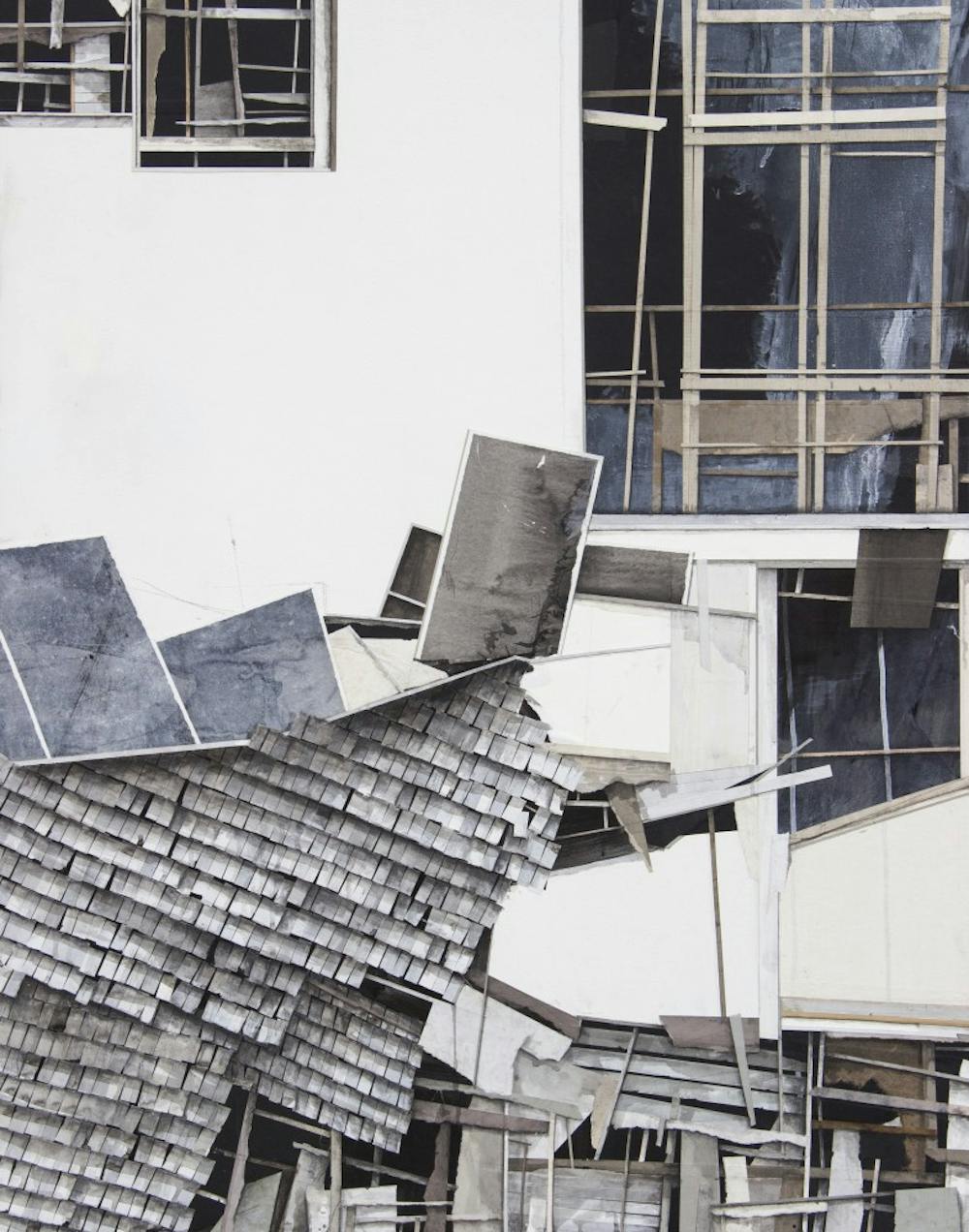Comprised of found paper, wood, and a variety of mixed media, Pittsburgh artist Seth Clark’s solo exhibition Fragmentation explores the temporal nature of man–made structures and the complex manner in which they deteriorate, shedding light on what he refers to as the “beauty of decay.” The exhibition is Clark’s third show with the gallery and remains on view until December 6. It is a continuation of an extensive body of work by Clark that focuses on similar subject matter, though the artist breaks new ground in terms of deconstruction and abstract representation.
Fragmentation is a collection of alternate realities in which buildings are the sums of their parts rather than their wholes. Collages of ramshackle windows, rooftops, and conglomerate masses of construction material grace the walls of Paradigm Gallery, providing visualizations of the process of deterioration. During his career a designer, Clark has created layouts for magazines, books, and posters, largely using compositional grids to guide his work. His work in Fragmentation both expands upon and challenges that grid system to create interesting structures from a design standpoint. “Houses are built in a systematic way with an underlying grid,” Clark says. “But when things start to break down naturally, that grid corrodes.”
The windows, walls, roofs, and shingles featured in Fragmentation are systems we see in everyday life that normally serve as symbols of permanence and stability. “A house is something every human understands,” Clark says. In that regard, Fragmentation is all about capturing disorder built upon these systems of order, playing with the viewers’ understanding until they can’t help but feel on edge. Clark finds decay—whether of us as humans, of our bodies, or of our homes—to be an extremely personal, subjective day–to–day process. Part of the reason he believes he was able to stick with such themes for so long was their subjectivity. “A healthy person might view my work as an issue of infrastructure preservation, while someone who is struggling with an ailment might see it completely differently,” he explains.
Clark began building collages of deterioration a decade ago as the subprime mortgage crisis was unfolding in America. At the time, he was a recent graduate of Rhode Island School of Design and worked as a freelance designer while picking up a sequence of odd jobs along the way. One of his first jobs in Pittsburgh—cleaning out and performing construction work on an abandoned house—helped him ground his artistic perspective in personal experience. “It was pretty cool to be starting this body of work while physically working on the same thing,” says Clark. “In 2009, we were going through the housing crisis, so it really felt appropriate to be working on abandoned houses.”
Nowadays, although many years have passed since the inception of his work, Clark still finds instability to be a persistent thread in American culture, and an especially salient one at that. His own city, Pittsburgh, significantly shapes this viewpoint: “Pittsburgh is becoming larger and larger every single day,” he says. “More and more gentrification is happening.” The uncertainty that comes with change shines through in the collages of Fragmentation, all of which display at once a frenetic energy and a remarkable stillness as if frozen in time.







